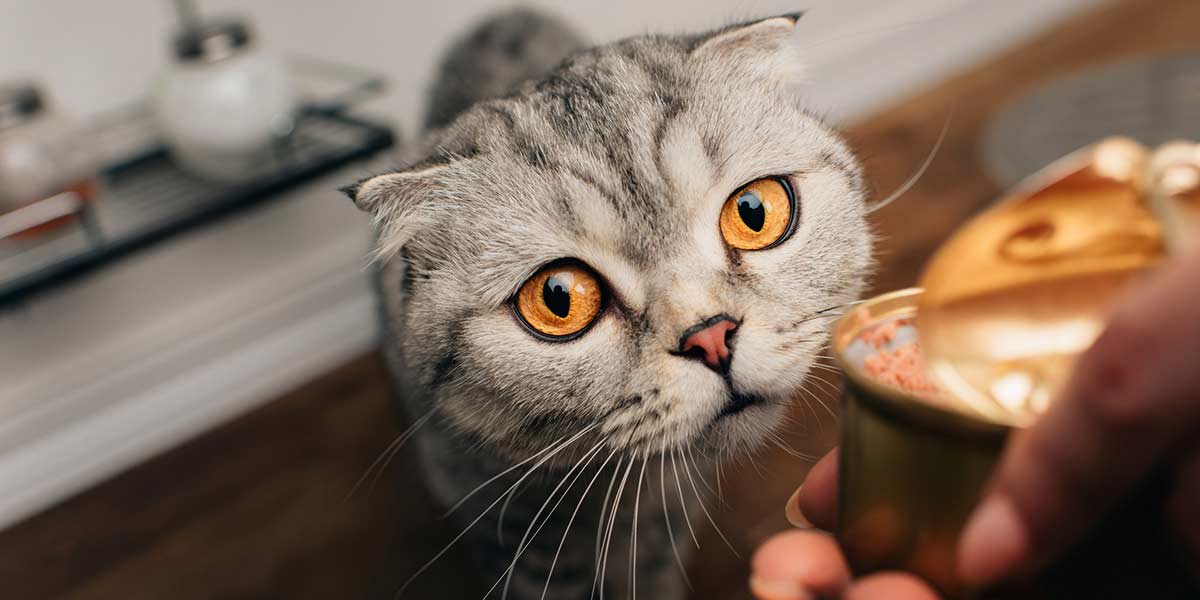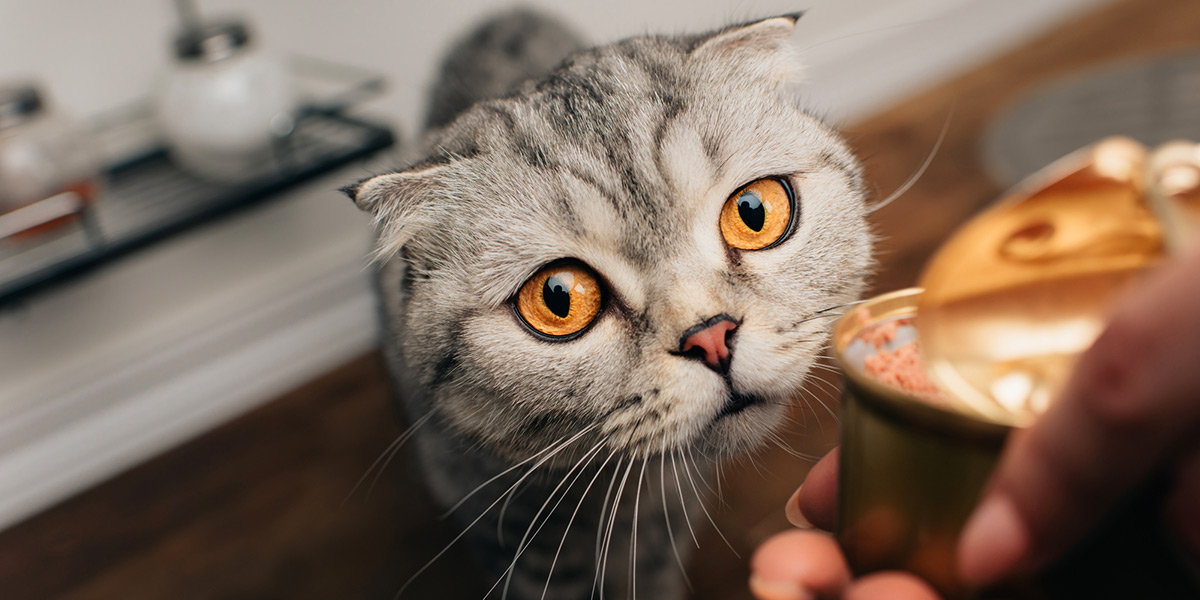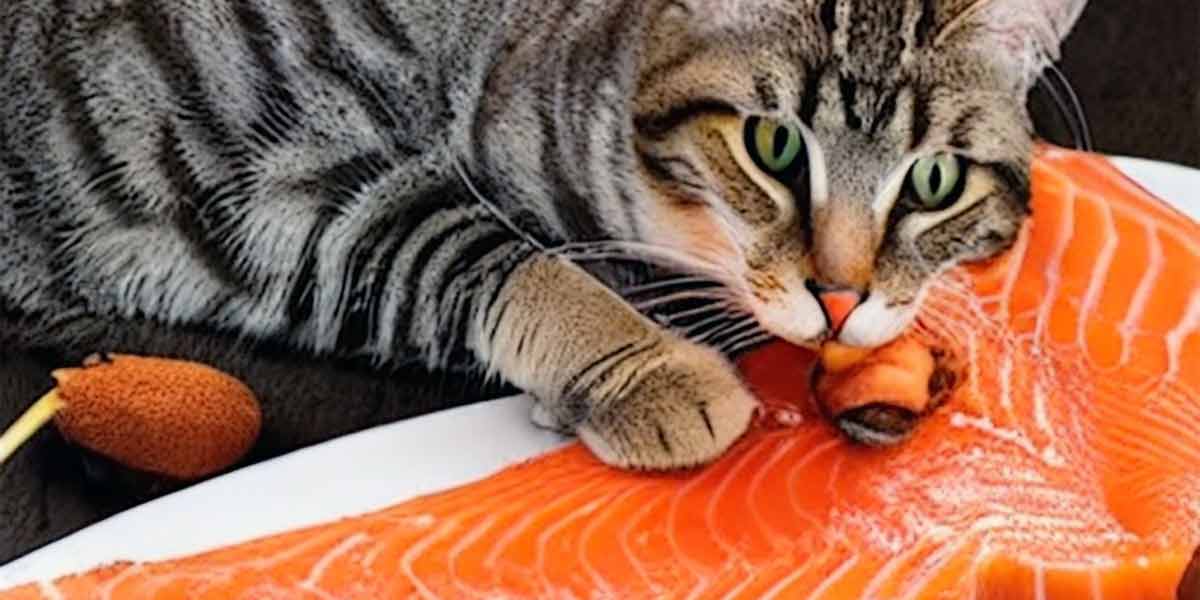Can I feed my cat tuna? Tuna is a delicious and nutritious meal for cats. However, many owners wonder if they can feed tuna to their pets.
As an affiliate, we earn from qualifying purchases. We get commissions for purchases made through links in this website’s posts from Amazon and other third parties.
In this post, we’ll take a look at whether cats can eat tuna, what form of tuna is safe for cats, and the best ways to feed your cat tuna. Keep reading to learn more!
Tuna is a great source of protein for cats and can help them maintain a healthy weight
Tuna is one of the leaner fish, making it a nutritious choice for cats. It can help cats maintain a healthy weight and avoid obesity. Tuna is also a good source of omega-3 fatty acids, which promote a healthy heart, skin, and coat. It is best to feed tuna to cats in small amounts, as too much can cause upset stomachs.
Tuna is also a good source of omega-3 fatty acids, which can help keep your cat’s coat healthy and shiny
Tuna is a good source of lean protein, omega-3 fatty acids, and niacin. Cats need to get protein every day to keep their coats and skin healthy. Tuna is a great way to get your cat the nutrients it needs.
Omega-3 fatty acids are important for keeping your cat’s coat healthy and shiny. Omega-3, fatty acids can reduce inflammation in your cat’s eyes, which can help her see better.
However Omega-3 fatty acids by reducing inflammation can lead to dry, oily, and itchy skin.
Niacin, which is also known as vitamin B3, helps your cat metabolize protein, fat, and carbohydrates, which is important for her physical and mental health.
Tuna is high in protein. However, the protein in tuna is unhealthy for cats because it is high in molecules of “peptides” that are too small for cats to digest. These peptides can cause health problems in cats, such as kidney problems.
Now that you know more about the benefits of tuna, you may want to add this to your cat’s diet. Including tuna in your cat’s diet can help her maintain healthy skin and a shiny coat.
What’s in tuna?
Tuna contains a small amount of taurine, a vital nutrient that is in muscle meat. However, your cat’s body does not convert taurine from tuna into taurine. So, feeding tuna to your cat is not helpful in terms of providing taurine.
Tuna is a good source of arachidonic acid, which is important for a cat’s immune system. However, feeding tuna to your cat on a regular basis can cause him to suffer from some really annoying problems.
Tuna contains food additives: Tuna can contain a wide variety of food additives, including molasses, monosodium glutamate (MSG), and preservatives. Some of these additives can cause allergic reactions in cats. The preservatives in canned tuna can also trigger asthma-like symptoms in cats.
Tuna contains mercury, which can damage your cat’s kidneys and liver. These organs are responsible for eliminating toxins from the body, so mercury can easily build up in them.
Tuna contains high levels of sodium: High levels of sodium can cause health problems in cats, including high blood pressure and obesity. Feeding your cat tuna on a regular basis can lead to these health problems.
Tuna contains protein: Tuna contains too much protein for cats to consume on a regular basis. This can upset their systems and lead to serious health problems.
If you’re feeding your cat tuna fish in a can, make sure it’s packed in water or water with juice, not oil
Canned tuna is a popular choice for cat owners, but it is important to remember to put tuna in your cat’s food. Canned tuna is great because it helps them get the needed protein since many cats don’t consume enough meat as they should. But, when feeding your cat tuna fish in a can, make sure it’s packed in water, not oil.
Tuna packed in oil is not recommended for cats, due to the inclusion of partially hydrogenated oils, which have been associated with heart disease in people. Cats who eat fish can have an allergic reaction to tuna that is packed in oil, so it’s generally not recommended.
That way your cat gets all of the protein it needs, and it is in its ideal food form. It’s especially important to put the tuna in wet food since cats need a lot of protein to thrive. Meat also contains taurine, which is important for proper eye function.
Tuna is also great because cats love the taste, and because it’s a way to supplement their diet.
You should also avoid giving your cat tuna that’s been cooked in spices or other flavorings
Cats have more sensitive digestive systems than both dogs and humans, so adding spices to their food can cause digestive issues.
Tuna that is high in mercury should be avoided, as mercury is a harmful heavy metal. Too much mercury can lead to inflammation and toxicity in the heart, brain, kidneys, and nervous system. It’s also important to note that cats do not metabolize mercury as well as dogs do, so eating tuna in excess can lead to dangerous levels of mercury in their systems if they’re not careful.
When giving your cat tuna, it’s important to let the food sit out for thirty minutes before giving it to them. This allows the tuna to cool and denature the proteins, making it safe for them to eat
Cats are finicky about food, especially fish. If you want to make their meal more palatable, you have to let tuna sit out for thirty minutes or more before giving it to them. In that way, you reduce the chances of your cat ingesting too much mercury.
Can you supply tuna to your kitty more often? Not really, and if you’re concerned about the mercury content of tuna, you can look for brands that offer “light” or “white” tuna, which tend to have lower mercury levels.
You may also want to look for tuna brands that use smaller fish as bait to prevent the larger fish from eating the bait and ingesting mercury.

How often should my cat eat tuna?
Can I feed my cat tuna constantly? While tuna is a healthy choice, it’s a good idea to limit feeding your cat with tuna to once per week, due to the mercury content.
What are the possible effects of feeding a cat tuna?
Tuna is a fish that contains many vitamins and minerals, so it is a “superfood” due to its nutritional value. It’s low in fat and high in protein, and it comes with both omega-3 fatty acids as well as vitamin B12.
However, tuna can be a very dangerous food for your cat to eat if repeated often!
The danger comes from mercury, a metallic element that is in all kinds of fish. If the cat is fed rarely with tuna it can’t cause immediate danger.
Fish that are high in mercury including tuna are swordfish, mackerel, and tilefish. But eating just one or two servings of tuna can cause problems.
Is it OK to feed your cat tuna fish? Tuna is recommended for cats who have an aversion to other meats. However, feeding tuna to cats is not an effective way to provide them with essential nutrients.
Tuna may contain harmful bacteria which can cause food poisoning in cats
The truth is that tuna fish is often considered a healthy food option for pets, but feeding it to your cat can cause sometimes food poisoning.
This fish (tuna) contains many nutrients, such as protein, healthy fats, and vitamins, and some veterinarians recommend it as a healthy snack for cats, just not as the main source of their diet. Feeding tuna to cats can cause food poisoning, as it contains high levels of thiaminase.
Thiaminase is a chemical that destroys thiamine, a vitamin that is important for your cat’s health. When your cat eats tuna, it destroys some of the thiamine in his body and eventually becomes deficient in this essential nutrient.
Can I feed my cat tuna? The answer is: yes, you can. But, in most cases, we recommend that you ensure you’re feeding your cat safe, nutritionally balanced cat food rather than feeding them tuna.
Tuna is not a nutritionally complete food for cats and can cause health problems if fed as a sole diet
Feeding tuna to your cat on a regular basis can result in health problems, including kidney problems, obesity, anemia, and urinary tract problems.
Because tuna is low in calories, it works well as food for weight loss. However, feeding your cat tuna regularly is not a healthy way to lose weight. Plus, it can result in health problems.
Watch in the video what the vet tells about feeding your cat tuna:
Cats may become addicted to the taste of tuna and refuse to eat other foods
If you own a cat, you know it can sometimes be pretty finicky. Your cat may become very finicky about its food and refuse to eat anything besides tuna fish.
Because cats are carnivorous, they may seek out meat, which is very common in cat food. Because cats have a low tolerance for spices, however, their foods are also often bland. This often leaves cats hungry and unhappy.
Many cats may be eating more food but not getting enough nutrition. Because of this, they may be more likely to eat flavors that are high in calories but low in nutrients. If you are concerned about your cat’s diet, consider providing it with more variety.
So, can I feed my cat tuna often if it won’t eat other foods? No, you can’t do that! Kitties need a richer diet than only eating tuna. Doing this in excess may cause serious problems for your cat.
How much tuna should I supply my kitty cat?
Tuna should only be fed to cats occasionally as a treat or supplement. Cats can safely eat up to 1.5 ounces of tuna in a day, but meals should not be regular. The protein in tuna can also be harmful to cats, especially kittens, and cats should never have more than 6 ounces of tuna in one day.
When feeding tuna to your cat, make sure to chop it up into small pieces to avoid choking
While feeding your cat tuna is OK in moderation, make sure to chop it up into small pieces to avoid choking. Also, don’t give your cat any tuna that contains sodium or sugar.
Tuna fish can be a great treat for your kitty, but it’s not OK to feed her a lot of it at once. Make sure to give your cat only small amounts of tuna, and give her some healthy treats as well.
Feeding a cat tuna can be expensive and it is important to check the label to ensure the product is of good quality
Tuna is a healthy addition to any diet, but it’s not a food that you should supply your cat every day.
When shopping for tuna, check the label to ensure that the product is of high quality. Some brands are better than others, so it’s important to read the ingredients list.
Tuna tends to spoil quickly, so it’s important to check the expiration date before you purchase it. Ideally, the label will indicate a “use by” date, which is the maximum amount of time that tuna can be in a cabinet before spoiling.
As tuna can be expensive, it’s important to read the label carefully before you purchase the product. Some brands don’t contain much tuna, so check the ingredients before you buy.
How to tell if your cat is having an allergic reaction to tuna
If you have a cat at home, you’ve probably observed your cat eating grass, rubbing against furniture, or meowing at night. When your cat starts behaving erratically, you might wonder if she’s sick.
If your cat is sneezing, has watery eyes, or is coughing, it may be having an allergic reaction to tuna. Here are four reasons your cat may be allergic to tuna fish.
While cats do drool and have funny quirks, those behaviors are rarely a sign of sickness. That said, if your cat’s behavior changes suddenly, it could be a sign of one serious illness or another.
That might be an allergic reaction to tuna.
If your cat has been itching all over and has red, inflamed skin, it may be having an allergic reaction to tuna. Tuna is one of the most common food allergies found in cats. Cats who have allergies are often allergic to the protein in raw fish, the amino acid arginine, and other fish by-products.
If your cat has a history of allergies or has certain health problems, it may not be able to handle tuna. Even a cat with no history of allergies can be allergic to certain fish, such as tuna. Keep your cat away from tuna, or make sure their tuna contains little or no fish.
If your cat is vomiting or has diarrhea, it may be having an allergic reaction to tuna
Tuna is a food that is incredibly popular with pet owners, especially cat owners. However, if your cat is vomiting or has diarrhea, it may be having an allergic reaction to tuna. If your cat is throwing up after eating tuna, it may be that it has been exposed to a toxin called ‘PTS’.
If your cat has diarrhea, it may be due to something called ‘Salmonellosis’. Salmonellosis is a bacterial disease that most commonly affects young cats. If your cat has diarrhea after eating tuna, you should speak to your vet.

Give tuna to your cat in small quantities as a treat
Tuna is only suitable for cats as a treat and should be used sparingly.
Avoid feeding tuna if the cat is pregnant, nursing, or has health problems
Can I feed my cat tuna if it is in a not normal situation?
Well, avoid feeding the cat tuna if the pet is pregnant or nursing. Tuna is high in mercury, a dangerous heavy metal that can enter the bloodstream and cause problems for nursing babies. Cats that consume tuna while pregnant can pass the mercury onto their newborns, which can cause severe developmental issues in kittens.
Tuna also contains high levels of arachidonic acid, an omega-6 fatty acid that can trigger inflammation in expectant mothers and their unborn kittens. If your cat is pregnant, avoid feeding her any food that contains high levels of arachidonic acid.
Tuna also is not a good choice for cats with hyperthyroidism or thyroid problems. These animals are at risk of thyroid tumors and trying to consume tuna will only exacerbate this condition.
Tuna is another fish that is not suitable for cats with kidney disease. The protein in tuna is particularly taxing for the kidneys, and a cat with kidney disease shouldn’t be eating it at all.
You can find tuna at most grocery stores, or online at pet stores
Tuna is one of the most common foods you will find at a grocery store, and you can easily find tuna at online pet stores as well.
One reason that tuna is one of the more popular foods out there is that it is considered to be a high-protein food. Tuna is also rich in other nutrients as well, such as vitamin B12 and niacin.
Conclusion
Can I feed my cat tuna fish? Well, tuna is not ideal for every cat. While many cats do well-eating tuna, some cats should not eat tuna. Also, don’t let your cat eat tuna regularly. Ask your Veterinarian if your cat can eat Tuna.






